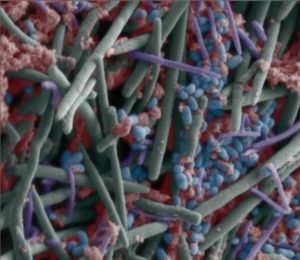 Gut bacteria in children varies among different Asian countries. A recent study found that microbiota of 303 subjects could be classified into two main clusters: driven by Prevotella (P-type) or by Bifidobacterium/Bacteroides (BB-type).
Gut bacteria in children varies among different Asian countries. A recent study found that microbiota of 303 subjects could be classified into two main clusters: driven by Prevotella (P-type) or by Bifidobacterium/Bacteroides (BB-type).
The majority of children in China, Japan and Taiwan harbored Bifidobacterium/Bacteroides (BB type), whereas those from Indonesia and Khon Kaen in Thailand mainly harbored Prevotella (P-type). It was interesting in that even eating different types of rice result in different gut bacteria.
From Asian Scientist: Diet, Location And Your Kid’s Gut Bacteria
An Asia-wide study of the gut microbiota of primary school children has identified differences linked to diet and geographical location.
The human intestinal tract hosts a large and diverse community of microorganisms—predominantly bacteria—which plays an important role in the host’s metabolism and ability to combat disease. In a study recently published in Scientific Reports, an international team of researchers led by Associate Professor Lee Yuan-Kun at the National University of Singapore examined fecal samples from 303 primary school children living in urban and rural cities of China, Japan, Taiwan, Thailand, and Indonesia. Unlike infants, children in the 7-11 age bracket have already developed a gut flora similar to that of adults but, unlike adults, they eat predominantly at home so their diets could be tracked more accurately.
The results show a strong correlation between the children’s gut microbiota and their place of residence and diet. The samples from China, Japan and Indonesia diverged the most, with Taiwan and Thailand filling the gaps in between, reflecting not only location but also patterns of human migration and agricultural exchanges. Bacterial communities in the gut vary widely between individuals, but they can be broadly classified into three types, according to the abundance of either Bacteroides, Prevotella, or Ruminococcus bacteria.The researchers found that Asian children display mainly the P-type (abundant in Prevotellaceae) and the BB-type (abundant in Bacteroidaceae and Bifidobacteriaceae), with the abundance of Bifidobacterium being a distinctive feature of the gut flora of Asian children.
P-type (Prevotella) gut communities are normally found in individuals with a high dietary intake of carbohydrates, while a diet rich in proteins and fats will favor a BB-type (Bifidobacterium/Bacteroides) community. Accordingly, the study revealed that Thai children living in Bangkok and eating a diet low in vegetables and fruit displayed a BB-type gut flora, while those living in Khon Kaen and eating a diet high in fruit and vegetables, displayed the P-type.
Not only was the P-type microbiota positively correlated with rice intake across the samples, but differences in contents of digestion-resistant starch across rice cultivars seemed to make a difference. P-type bacteria thrive in an environment rich in digestion-resistant starch, both because resistant starch is a substrate for bacterial fermentation and because it decreases the concentration of secondary bile acids—harmful to P-type bacteria—in the large intestine.
After cooking, long grained Indica rice contains 6.6 percent digestion-resistant starch while short grained Japonica rice contains only 0.7 percent. The researchers suggest that the low content of resistant starch in Japonica rice might be the reason why 13 percent of Japanese children who ate a diet predominantly rice-based, still exhibited a BB-type microbiota. Other foodstuff were seen to be associated with P-type gut flora: soybeans (in the form of tempeh, not tofu) because of a high concentration of fiber; eggs, chicken and sweet potatoes because of their high content of vitamin A, which is thought to be beneficial to the growth of Prevotella bacteria.
The article can be found at: Nakayama et al. (2015) Diversity in Gut Bacterial Community of School-Age Children in Asia.
